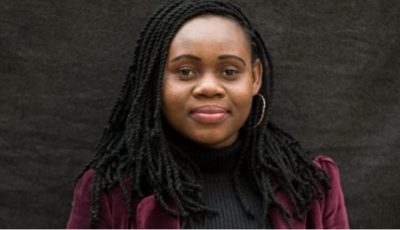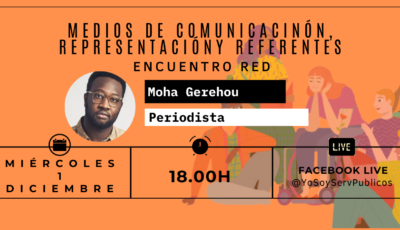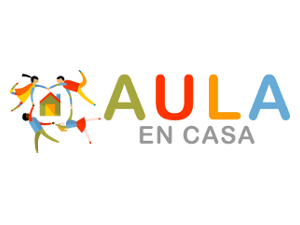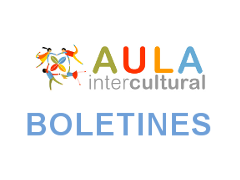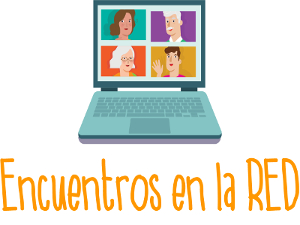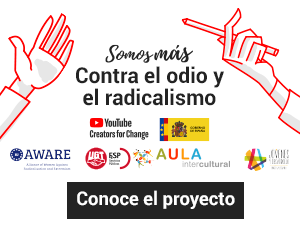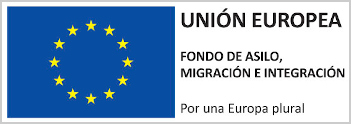Anti-Islamophobia Education as Transformative Pedagogy: Reflections from the Educational Front Lines
The aftermath of 9/11 and the corresponding rise of global militarism and imperialism have had deep consequences for the realities of Muslims around the world. The reemergence of Orientalist representations have provided the ideological justifications for military incursions. This short reflective article outlines the challenge that critical educators faced in developing an epistemological and pedagogical framework and resources for anti-Islamophobia education in response to the resurgence of neo-Orientalist politics and representations.
Voices from the Aftermath of 9/11
“After September 11 my teacher told me I should change my name from Muhammed, because it was not a good name.”
“Other kids keep telling me to go back where I came from.”
“When landlords hear my Muslim name when I call for an apartment, suddenly there’s no vacancy.”
“My Muslim clients have stopped coming to homeless drop-in centres, and Muslim women are withdrawing from community programs.”
“My son said, ‘Mom, we came from a war and now we are not safe or wanted in this country.’”
“After September 11, we stopped being seen as Canadian citizens and became the enemy.”
These statements were collected from students, parents, and service providers in the Greater Toronto area after the tragic events of 9/11 changed the sociopolitical landscape for Muslims across North America. As a scholar, researcher, educator, and activist, I gathered these testimonies during my research in schools and among Muslim immigrants and refugees facing the continuing realities of poverty and homelessness in Canada, and who now had to contend with the added challenge of Islamophobia. I heard impassioned narratives that spoke poignantly about the lived experiences of racial exclusion, religious discrimination, and xenophobia. For racially and religiously marginalized Muslims, being part of a common framework of citizenship and “Canadianness” quickly became a fragile reality, as we were increasingly being pushed outside the carefully guarded boundaries of nation and community. Our bodies were positioned as alien and suspect, our national loyalties were questioned, and we were subjected to harassment and state-sanctioned policies of racial profiling.
Across the globe, Muslims have faced individual and systemic acts of discrimination and violence after 9/11 as a form of retaliation for the collective guilt ascribed to followers of Islam and anyone who resembled them. In Toronto, a city dubbed the “most multicultural city in the world,” hate crimes escalated. The type of incidents reported ranged from verbal abuse to physical threat, violence, and the destruction of property. According to a report by the Toronto Police Services, there was a 66 percent increase in hate crimes in 2001. [1] The largest increase was against Muslims.
Hate crime incidents in Toronto included the stabbing of a Muslim man, the beating and subsequent hospitalization of a 15-year-old boy, and drivers who attempted to run down Muslim women as they crossed the street. Mosques, which often house Islamic schools, received threats. Outside of Toronto, a Hindu temple was firebombed after being mistaken for a mosque.
In other examples of widespread discrimination, the Refugee Housing Task Force in Toronto noted that numerous landlords were refusing to rent to Muslims after 9/11. [2] A recent study I conducted on homelessness among Muslims in Toronto also revealed the lived experiences of housing discrimination based on both race and religious identity, [3].Another Toronto-based study identified significant barriers to veiled Muslim women trying to get jobs. [4]Therefore, not only was the safety of Muslims (and those mistaken as Muslims) being compromised, but so was their ability to access such basic needs as employment, housing, and social service support.
In local schools, parents and students reported numerous incidents of racism, Islamophobia, and harassment. Many parents spoke of the harassment they faced when coming to the schoolyard to pick up their children. My own son, whose name is “Usama,” was routinely referred to as “Bin Laden” at school, and was called a “terrorist” and told that his house should be blown up. In other incidents, schoolgirls wearing hijabs had stones thrown at them as they walked to and from school.
As a result of these circumstances and the broader related factors of globalization, trans-nationalism, and the changing geopolitical landscape, new challenges are being posed for education in a pluralistic society. Within the current political context of war and the rise of military and economic imperialism, the role of critical educators committed to antiracism, equity, and social justice becomes increasingly salient.
Mapping the Discursive Foundations for Anti-Islamophobia Education
As an anti-racism scholar and educator, fellow colleagues and I realized from as early as September 12 that there was an urgency to frame a critical pedagogical response to address and challenge the rampant Islamophobia affecting the realities of Muslims from all walks of life and social conditions. Among the most vulnerable were children and youth, who received little support from schools in dealing with the backlash that many were experiencing on a routine basis. Most schools were reluctant to engage in any response beyond the politically neutral arena of “crisis management.” Among the school districts that I was in contact with, there was a clear resistance to addressing or even naming issues of racism and Islamophobia. In fact, the discursive language to name and define the experiences that Muslims were encountering on a day-to-day basis did not even exist within the educational discourse. While schools were reluctant to name specific incidents as racism – part of an all-too-common denial – the notion of “Islamophobia” did not have any currency at all. In fact, it was not a part of the language or conceptual constructs commonly used by educators, even by those committed to multicultural and antiracist pedagogy.
I realized the urgency to map a new epistemological and pedagogical terrain by creating an educational framework for addressing Islamophobia. Within the existing equity-based educational frameworks, one could find the conceptual and pedagogical tools to address issues of racism, classism, sexism, homophobia, ableism, and anti-Semitism. However, the discursive foundations for dealing with Islamophobia and the accompanying educational resources simply did not exist.
Developing a new framework to fill this gap involved coining a new term: “Anti-Islamophobia Education.” Being able to name and define the experience of Muslims as the result of Islamophobia was critical to shaping the kind of interventions that would take place from a critical educational standpoint. Before outlining a methodology for conducting anti-Islamophobia education, it was necessary to develop some discursive foundations, arrive at a definition of Islamophobia, and create an understanding of what it was that we sought to challenge and resist.
From a socio-psychological standpoint, the notion of Islamophobia is often loosely translated as an “attitude of fear, mistrust, or hatred of Islam and its adherents.” However, this definition presents a narrow conceptual framework and does not take into account the social, structural, and ideological dimensions through which forms of oppression are operationalized and enacted. Applying a more holistic analysis, far from being based on mere “ignorance,” Islamophobic attitudes are, in fact, part of a rational system of power and domination that manifests as individual, ideological, and systemic forms of discrimination and oppression. The idea that discrimination, be it based on race, class, gender, sexuality, ability, or religion, simply stems from “ignorance” allows those engaged in oppressive acts and policies to claim a space of innocence. By labeling Islamophobia as an essentially “irrational” fear, this conception denies the logic and rationality of social dominance and oppression, which operates on multiple social, ideological, and systemic levels.
Therefore, to capture the complex dimensions through which Islamophobia operates, it is necessary to extend the definition from its limited conception as a “fear and hatred of Islam and Muslims” and acknowledge that these attitudes are intrinsically linked to individual, ideological, and systemic forms of oppression that support the logic and rationale of specific power relations. For example, individual acts of oppression include such practices as name-calling or personal assault, while systemic forms of oppression refer to the structural conditions of inequality regulated through such institutional practices as racial profiling or denying jobs or housing opportunities. These exclusionary practices are shored up by specific ideological underpinnings, among them the purveyed notions designed to pathologize Muslims as “terrorists” and impending threats to public safety. Understanding the dimensions of how systems of oppression such as Islamophobia operate socially, ideologically, and systemically became a key component of developing educational tools that would help build the critical skills needed to analyze and challenge these dynamics.
From a discursive standpoint, I locate anti-Islamophobia education within a integrative anti-racism framework [5]that views systems of oppression based on race, class, gender, sexuality, ability, and religion as part of a multiple and interlocking nexus that reinforce and sustain one another. Based on this understanding, I have mapped some key epistemological foundations for anti-Islamophobia education. [6]This includes the need to “reclaim the stage” through which Islam is represented from the specter of terrorists and suicide bombers to a platform of peace and social justice. “Reclaiming the stage” requires adopting a pedagogical approach that shifts the popular media discourse away from the negative, essentialized referents and tropes of abject “Otherness” ascribed to Muslims. This move involves presenting a critical counter-narrative in order to reframe the Manichean worldview and “clash of civilizations” narratives typically being purveyed in order to present a more nuanced, reasoned, and critical perspective of the global sociopolitical realities that Muslim individuals and societies are confronting, engaging, and challenging.
Another foundational aspect of anti-Islamophobia education involves interrogating the systemic mechanisms through which Islamophobia is reinforced, by analytically unraveling the dynamics of power in society that sustain social inequality. Racial profiling, which targets groups on the basis of their race, ethnicity, faith, or other aspects of social difference, and similar issues are major systemic barriers that criminalize and pathologize entire communities.
In schools, the practice of “color-coded streaming,” whereby a disproportionate number of racially and ethnically marginalized youth are channeled into lower non-academic level streams, is another example of institutionalized racism. Negative perceptions held by teachers and guidance counselors toward racialized students have often led to assumptions of failure or limited chances for success, based on such false stereotypes as the notion that “Islam doesn’t value education for girls” or “Black students won’t succeed.” These negative attitudes are relayed to students through the “hidden curriculum” of schooling and lead to lower expectations being placed upon youth from specific communities. [7]Developing critical pedagogical tools to analyze and develop challenges to these systems of domination is part of building a transformative and liberatory pedagogy, one geared toward achieving greater social justice in both schools and society. Another key goal of anti-Islamophobia education involves the need to demystify stereotypes. Since 9/11, renewed Orientalist constructions of difference have permeated the representation of Muslims in media and popular culture. Images of fanatical terrorists and burqa-clad women are seen as the primary markers of the Muslim world. Deconstructing and demystifying these stereotypes is vital to helping students develop a critical literacy of the politics of media and image-making. Critically examining the destructive impact of how these images create the social and ideological divide between “us” and “them” is important to exposing how power operates through the politics of representation. [8]
Creating a Transformative Pedagogy: Unpacking New Anti-Islamophobia Resource Kits
Through an innovative program called “Toward Understanding: Moving beyond Racism and Islamophobia,” developed by MENTORS (Muslim Educational Network, Training, and OutReach Service) and funded by the Ministry of Canadian Heritage Multiculturalism Program and the Canadian Race Relations Foundation, the opportunity to develop critical educational tools to challenge Islamophobia finally became possible. As part of a post-9/11 funding initiative, the project sought to develop multimedia resource kits, including posters, videos, and lesson plans for interactive activities that would help students understand and challenge racism and Islamophobia. The lessons also incorporate activities to help students comprehend the broader mechanisms of oppression as interlocking systems based on racism, classism, sexism, homophobia, ableism, and faithism.
Notably, the MENTORS resource kits, codeveloped by myself and diversity educator and consultant Suzanne Muir, are the first-ever comprehensive, multimedia resources designed to address Islamophobia at both the primary and secondary school levels. During the 18 months of the project, MENTORS completed 75 anti-Islamophobia workshops in schools across Ontario. Marking its success, the project recently received the prestigious J. S. Woodsworth Human Rights Award and the Ontario Elementary Teacher Federation Anti-Bias Curriculum Award.
Using a popular education approach, the anti-Islamophobia workshops provide age- appropriate and youth-friendly materials, activities, and strategies that engage learning about Islamophobia and racism in creative and interactive ways, such as through role-play and simulation activities. For example, one simulation activity examines such little-known aspects of Islamic history as the arrival of West African Mandingos in North America prior to Columbus and the political roles of Muslim women during the Crusades. For example, Shajarat al-Dhurr, the wife of a thirteenth-century Egyptian ruler, secretly governed the country and the army after her husband’s death and thwarted the invading Crusader armies. Students work in groups to role-play these and other historical scenarios, among them life in matriarchal Muslim societies in Indonesia, Uthman dan Fodio’s contributions to Islamic social development in Nigeria, stories of African Muslim slaves, the travels of the Chinese Muslim explorer Cheng Ho, and the arrival of the first Muslims in Canada who came from Scotland in the midnineteenth century. Through these historical vignettes, students gain a broader understanding of Muslim societies and their contributions to world culture and knowledge. This understanding, in turn, provides a critical counter-narrative to the negative constructions of Muslims they encounter in popular media.
The historical foundations of Islamophobia are also addressed as a part of this critical pedagogical enterprise. Islamophobia did not begin on 12 September 2001; rather, it has a long history that well predates the current context. Tracing Islamophobia’s genealogy through interactive roleplay activities takes students back to seventh-century Arabia, where members of the young Muslim community were persecuted and exiled for their beliefs. Through mapping the trajectory of Islamophobia, students learn how Islamophobic discourses were activated at particular historical moments: during the Crusades, the expulsion of the Muslim Moors in sixteenth- century Spain, and European colonization of Muslim societies.
These history lessons demonstrate how Islamophobic representations have been constructed as ideological tools to legitimate campaigns of political, social, economic, and military domination. Unraveling Islamophobia’s historical roots is critical to deconstructing how contemporary discursive practices sustain and legitimate the current conditions of global militarism and imperialism.
As part of a media literacy activity, students also interrogate images in contemporary political cartoons relating to Islam and Muslims in order to decode and analyze the politics of these representations, how they create an ideological basis for sustaining conditions of power and domination, and help legitimate campaigns of violence. These are important analytical tools to help youth develop a critical media and political literacy.
In countering what I term gendered Islamophobia, [9]other lessons attempt to rupture the stereotypes of passive and backward Muslim women. For example, at the beginning of the workshop, students are shown an image of a young Muslim woman wearing hijab with a caption that reads: “If you were a movie producer, how would you cast her in a role?” Responses from students as young as 8 years old invariably cast her as a “terrorist,” “foreigner,” or someone “escaping from her husband.” She is acknowledged as a marginal player, not as someone featured in a dominant narrative or starring role. After this part of the activity, the young woman’s true identity is revealed: She is actually the captain of a Muslim women’s soccer team in the United Kingdom. This activity generates a great deal of surprise from students, who do not recognize this role as one normally associated with Muslim women. In popular culture, Muslim women are routinely represented as being passive rather than active agents in their lives. This activity is a powerful vehicle for opening up critical dialogues that begin to interrogate why so few counter-narratives present Muslim women in more multidimensional ways, as opposed to the narrow Orientalist tropes of backwardness, victimization, and passivity.
The danger of presenting an uncritical romanticized view of women’s conditions within Muslim societies is balanced by a role-play scenario that depicts the denial of women’s rights under the Taliban regime in Afghanistan. However, it also shows how Afghan women’s organizations resisted their marginalization and transgressed the arbitrary injunctions imposed on them by secretly videotaping human rights abuses and running underground schools for girls. This allows Muslim women’s agency in the face of repression to be centered.
In another pedagogically and politically rich activity for the primary level, students receive a color poster that shows women, men, and children of different racial backgrounds, with some (but not all) of the women wearing hijab, engaged in various activities and roles, including a police officer, doctor, musician, school bus driver, a man cooking in the kitchen, a woman and a girl playing sports, and a film director. The caption on the poster reads: “Who Am I?” Students are first asked to identify those who are “Canadian.” In most instances, blonde-haired and fair-skinned people are identified (even in multiethnic classrooms) as being “Canadian.” Students are then asked to identify the “Muslims.” In most cases, it is the darker skinned people or women wearing hijab. Finally, it is revealed that everyone in the picture is both Canadian and Muslim.
This activity creates an important entry point for interrogating a student’s understanding of citizenship, belonging, and “Otherness.” The “teachable moment” that this activity opens up allows for the space to critically examine, reframe, and expand the boundaries that define “Canadianness.” The examples underscore the diversity among Muslims in terms of ethnicity, occupations, and roles in society, once again rupturing the narrow and limiting stereotypes about who Muslims are, what they look like, and what they do. Seeing Muslims in a variety of social roles and occupations also opens up the range of narratives that those Muslim children who may be participating in the activity can aspire to in their own lives. The anti-Islamophobia activities also use humor to diffuse the tension and discomfort that often occur when dealing with difficult issues relating to marginality, social exclusion, and discrimination. For example, some of the video resources provided in the kits, among them “BBQ Muslims” and “Death Threat” (produced by Canadian filmmaker Zarqa Nawaz), use humor and satire to address the dominant stereotypes of Muslims as terrorists and fanatics. These videos also show a lighter side to the Muslim persona, which is often perceived as overly serious and incapable of playful irreverence or self-deprecating levity.
The resource kits also include an original video called “At First Glance…,” which was developed and coproduced by MENTORS and geared toward primary school children. The video presents three short vignettes depicting scenarios of Islamophobia based on stereotypical preconceptions and biases, and shows how these situations and attitudes are eventually ruptured and resolved.
With the current heightened public interest in learning about Islam and the plethora of neo-Orientalist and blatantly Islamophobic books and resources in the market, the MENTORS anti-Islamophobia resources provide important pedagogical tools for children and youth to become critical consumers of culture and knowledge. As a transformative pedagogical praxis, anti-Islamophobia education engages an important entry point for shattering the myths and legacies of oppression and helping students develop a higher level of cultural and political literacy.
The American Journal of Islamic Social Sciences 21:3
[1] Toronto Police Services Annual Hate/Bias Crime Statistical Report, 2001.
[2] Refugee Housing Task Force Meeting Minutes, 16 October 2001.
[3] Jasmin Zine, Living on the Ragged Edges: Absolute and Hidden Homelessness among Latin Americans and Muslims in West Central Toronto (A report commissioned by the Informal Housing Network Project, 2002).
[4] Nicholas Keung, “Hijab and the Job Hunt.” Toronto Star, Section A-7 (2002); Graeme Smith, “Muslim Garb a Liability in Job Market, Study Finds,” Globe and Mail, Section A-10 (2002).
[5] George J. Sefa Dei, Anti-Racism Education: Theory And Practice (Halifax: Fernwood Press, 1996).
[6] Jasmin Zine, “Dealing with September 12: Integrative Anti-racism and the Challenge of Anti-Islamophobia Education.” Orbit Special Issue: Anti-Racism Education, guest editors: George Dei and Njoki Wane (Canada: University of Toronto, 2003).
[7] George J. Sefa Dei, Josephine Mazzuca, Elizabeth McIsaac, and Jasmin Zine, Re-Constructing Dropout:A Critical Ethnography of the Dynamics of Black Students’ Disengagement from School (Toronto: University of Toronto Press, 1997); Jasmin Zine, “Muslim Youth in Canadian Schools: Education and the Politics of Religious Identity,” Anthropology and Education Quarterly 32, no. 4 (2001): 399-423.
[8] George J. Sefa Dei, Sonia James-Wilson, and Zine Jasmin et al., Inclusive Schooling: A Teacher’s Companion to ‘Removing the Margins.’ (Toronto: Canadian Scholars’ Press, 2002).
[9] Jasmin Zine, “Staying on the Straight Path: A Critical Ethnography of Islamic Schooling in Ontario” (Ph.D. diss., Ontario Institute for Studies in Education/ University of Toronto, 2004).
17 October 2012


